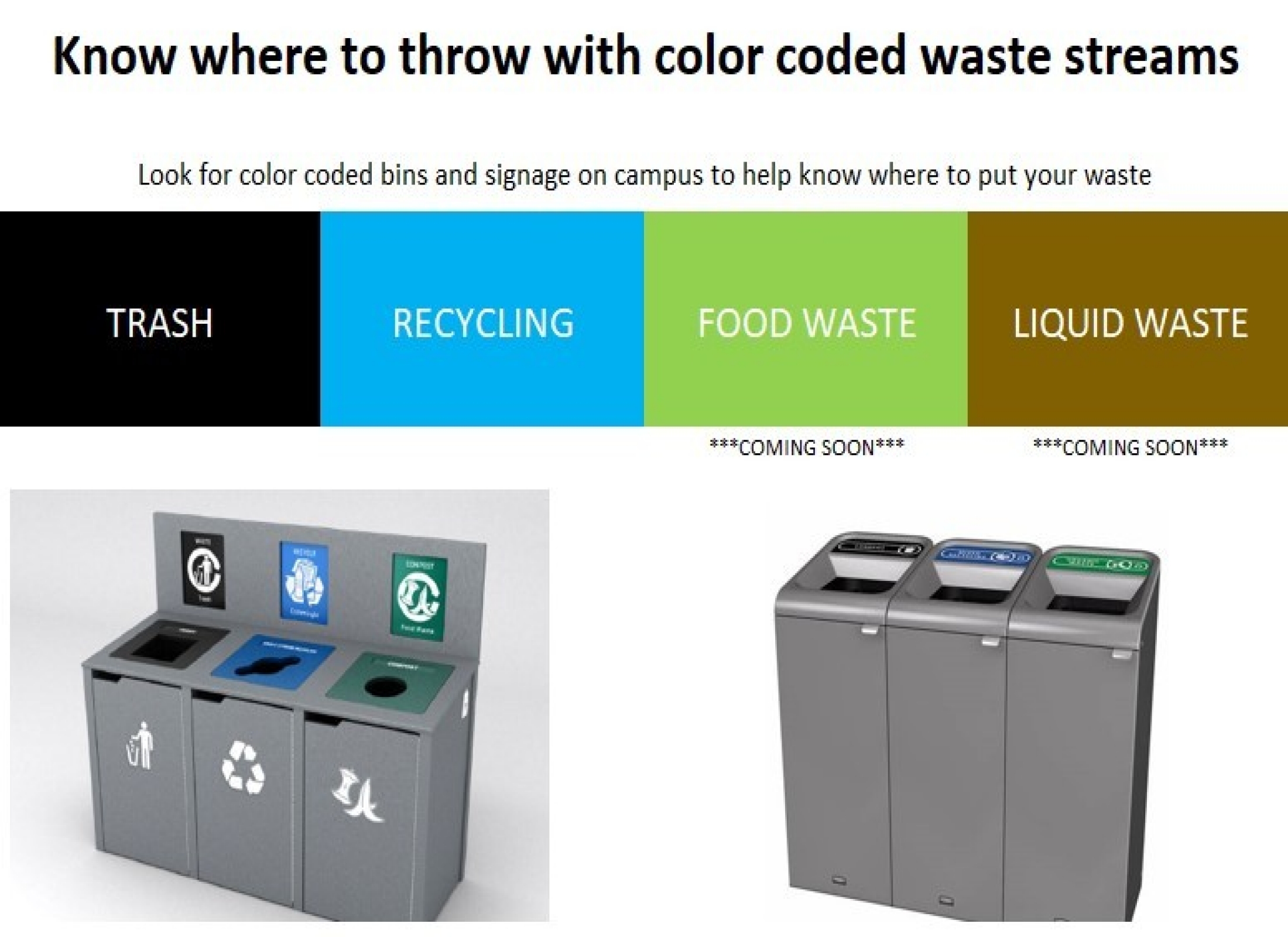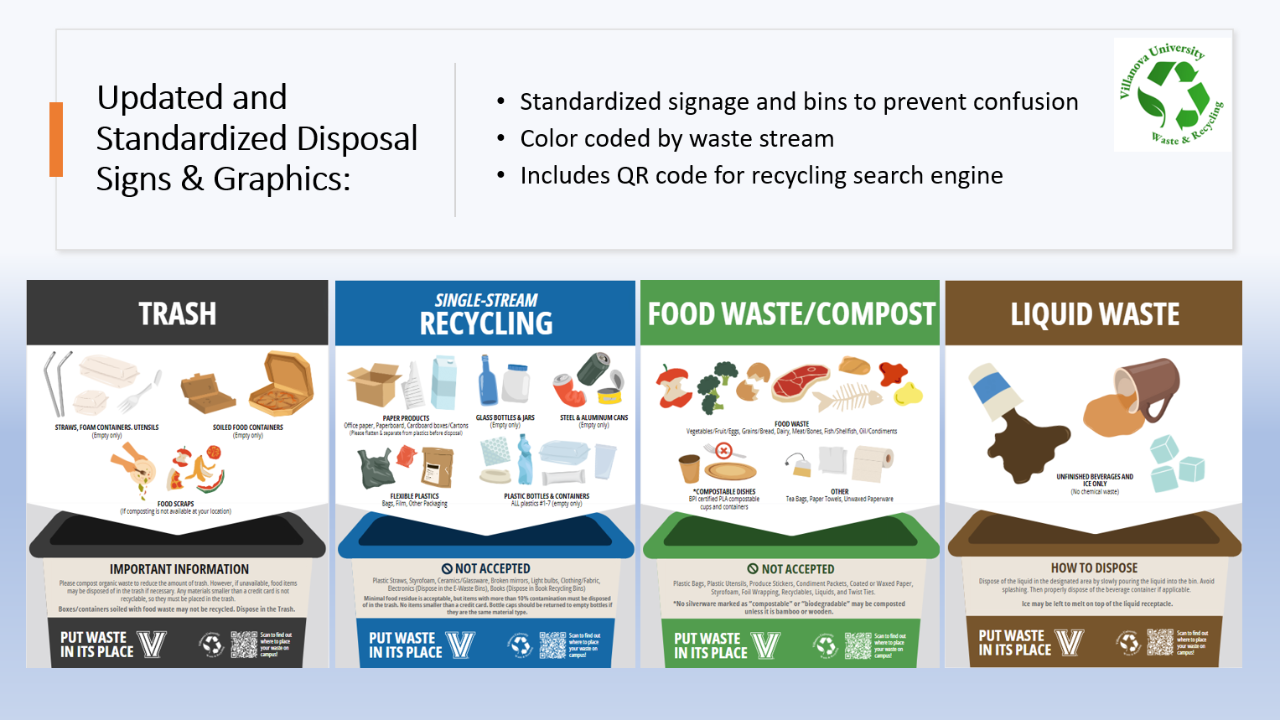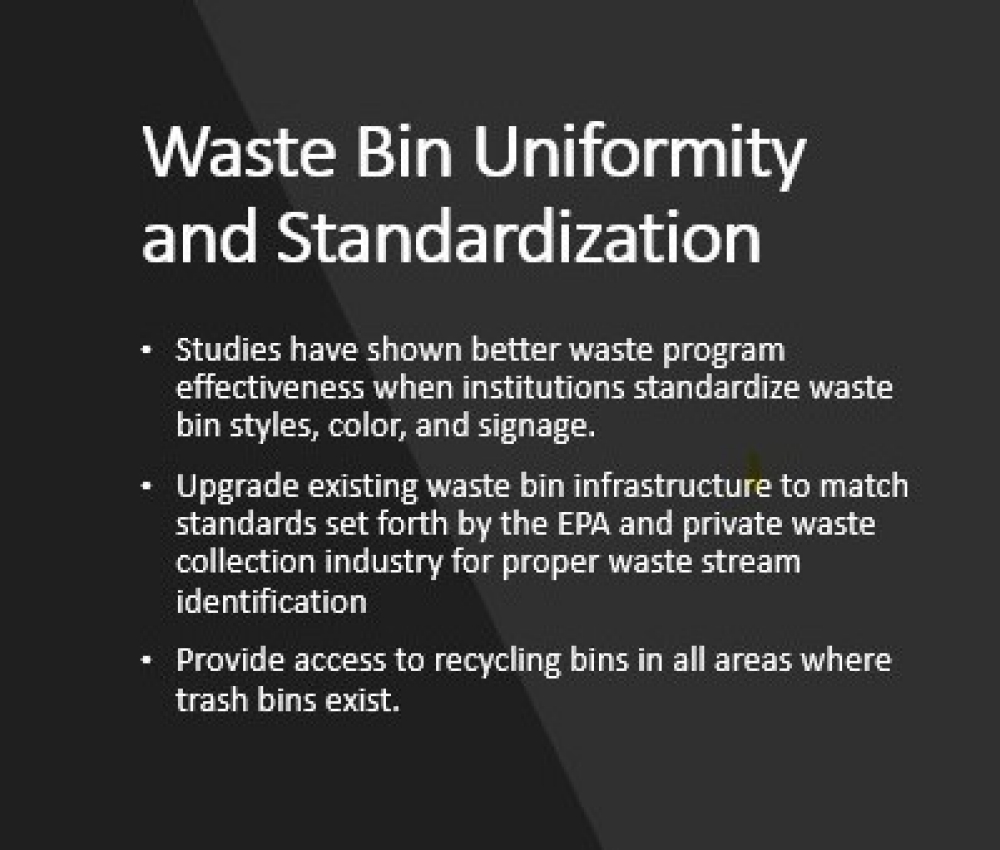Bin Standards and Waste Uniformity

Villanova Waste Bin Standards
As part of the University’s sustainability plan, we are currently working to standardize all campus waste bin systems, so they are more uniform and educational. Studies prove that standardizing bins/signage with proper colors and infographics makes a significant difference in the effectiveness of organizations’ recycling programs, waste diversion, and recycling percentages.
As these infrastructure changes are implemented, note the standards below:
- Bin, Lid (when applicable), and Label Coloring:
- Black for trash
- Blue for single-stream/mixed recycling
- Green for food waste/organics composting
- Brown for liquid waste (beverage waste)
- The color scheme is in line with guidance from the EPA, as well as industry standards. Color coding of waste bins also improves accessibility for people with some visual impairments
- Wording:
- Trash or Waste (as we do not send our trash to a landfill)
- Single Stream Recycling or Mixed Recycling (Villanova University is a single-stream recycling facility)
- Liquid Waste
- Organics Waste/Compost or Food Waste/Compost
- Labeling Design: whenever possible, use the suggested wording shown in the examples above. If space or bin design does not allow for these labels, please connect with the VU Waste & Recycling Department for guidance before ordering.
- Waste Bin Signage: whenever possible, include the below signage near all waste centers (aka a connected trash and recycling bin combo). Incorporating icons or pictures of acceptable waste items in each waste stream should also be part of the waste bin signage when space allows.
- Bin Opening and Signage Alignment: the bin labeling and bin opening should both be visible together. Avoid bin solutions where you cannot see labeling when looking at the bin opening. Labeling or signage must exist on each side of bin where there is an opening.
- Bin Opening Height the bin opening should be no more than 36" from the floor or ground level to provide accessibility in accordance with ADA guidelines
- Bin Size: As much as possible keep with the standard bin size indicated below, allowing for bag size uniformity, as well as having replacements available.
- Small desk side containers should be 7 gallons
- Common space containers can either be 16, 23, or 33-35 gallons (any larger and there is a risk of injury for custodial members).
- Larger containers for common areas or outdoor spaces can be 33 or 45 gallons.
- It is encouraged that bins larger than 35 gallons can be emptied from the front, through a door panel, rather than by having to lift the inner bin up out of the outer shell.
Connected Waste Centers: studies have shown that consumers are much more likely to not only recycle, but recycle correctly, if trash and recycling bins are located next to each other. To ensure this is the case across campus, we should select bin solutions that have the two bins (trash & recycling) connected or with the ability of being connected. It is a minimum expectation that a recycling bin be located next to every trash bin, in order to provide adequate access to recycling. Without access to recycling bins, waste diversion rates will not be optimized.


